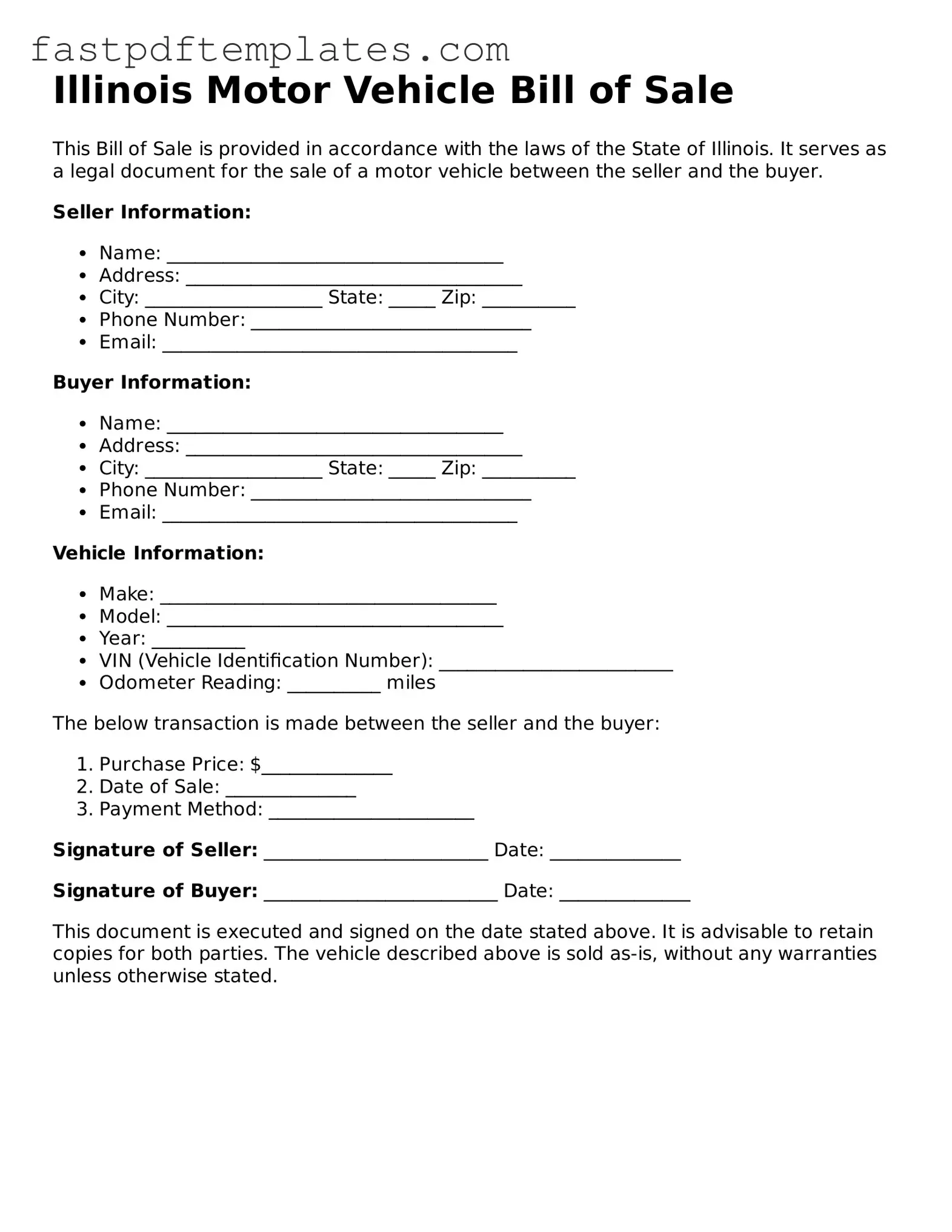The Illinois Motor Vehicle Bill of Sale form is similar to the general Bill of Sale document used in many states. This document serves as proof of a transaction between a buyer and a seller. It details the item being sold, the purchase price, and the date of the sale. Like the Motor Vehicle Bill of Sale, a general Bill of Sale can include information about the parties involved and any warranties or conditions of the sale. Both documents aim to protect the interests of both parties and provide a record of the transaction.
Another document that shares similarities is the Vehicle Title. The Vehicle Title acts as legal proof of ownership for a vehicle. When a vehicle is sold, the title must be transferred from the seller to the buyer, often accompanied by a Bill of Sale. While the title provides essential information about the vehicle, such as its VIN and make, the Bill of Sale outlines the terms of the sale. Together, they ensure that ownership is properly documented and transferred.
The Odometer Disclosure Statement is another important document that aligns with the Motor Vehicle Bill of Sale. This form is required when a vehicle is sold and provides a record of the vehicle's mileage at the time of sale. It protects the buyer by ensuring they are aware of the vehicle’s history and helps prevent fraud. Like the Bill of Sale, this document must be signed by both the seller and the buyer to be valid.
The Application for Title and Registration is also similar. When a vehicle is purchased, the new owner must apply for a title and registration with their state’s motor vehicle department. This application often requires a copy of the Bill of Sale as proof of ownership and purchase price. Both documents are essential for establishing legal ownership and ensuring the vehicle is registered correctly.
The Purchase Agreement is akin to the Motor Vehicle Bill of Sale in that it outlines the terms of the sale. This document may include payment terms, delivery details, and any contingencies related to the sale. While a Bill of Sale serves primarily as proof of the transaction, the Purchase Agreement can cover broader terms and conditions, providing a more comprehensive understanding of the sale.
In addition, the Affidavit of Ownership can be relevant in situations where the seller cannot provide a title. This document is a sworn statement asserting the seller's ownership of the vehicle. It may be used in conjunction with a Bill of Sale to establish ownership when the title is lost or unavailable. Both documents help facilitate the sale and protect the buyer's interests.
The Vehicle History Report is another document that complements the Motor Vehicle Bill of Sale. This report provides essential information about the vehicle's past, including accidents, title issues, and previous ownership. Buyers often request this report before finalizing the sale to ensure they are making an informed decision. While the Bill of Sale confirms the transaction, the Vehicle History Report gives insight into the vehicle’s condition and value.
The Release of Liability form is also similar in purpose. This document protects the seller by notifying the state that they are no longer responsible for the vehicle once it has been sold. It is typically submitted to the Department of Motor Vehicles after the sale and can be used alongside the Bill of Sale to demonstrate that the seller has transferred ownership and is not liable for any future incidents involving the vehicle.
Lastly, the Insurance Policy Declaration Page can be relevant in the context of vehicle sales. This document outlines the insurance coverage for the vehicle and may be required by the buyer’s insurance company. It ensures that the new owner has coverage from the moment they take possession of the vehicle. While it does not serve as proof of the sale, it is an important aspect of the vehicle ownership process that often accompanies the Bill of Sale.
